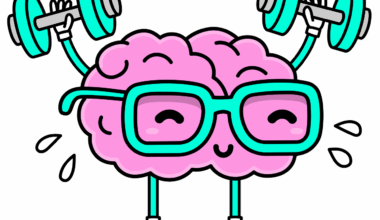Scheduling and Reminder Features in Workout Planning Apps
Workout planning apps have transformed how individuals approach fitness. One primary highlight is the scheduling and reminder features, as they keep users organized and motivated. To stay committed to fitness goals, effective time management is essential. Therefore, these apps allow users to create personalized workout schedules based on their unique preferences and availability. This is crucial for people with busy lifestyles who might find it challenging to carve out time for exercise. Moreover, the integration of reminder features ensures that users receive prompts about upcoming workouts. Some applications allow users to customize reminders based on their routines. Whether it’s a gentle nudge to get moving or a motivating message, these reminders can enhance accountability. Users can set reminders for preferred times, promoting consistency and habit formation. Additionally, syncing with calendars provides users with comprehensive scheduling tools. This helps them avoid clashes between personal commitments and workout times. As a result, with these clever features, users can maintain a rigorous and beneficial workout regimen that fits seamlessly into their lives, ensuring they reach their fitness aspirations with structured support.
CRM Integration for Enhanced User Experience
Several workout planning apps integrate customer relationship management (CRM) tools, enhancing user interaction and retention. This integration focuses on understanding user preferences based on historical workout data. By analyzing these patterns, apps can offer personalized fitness plans tailored to individual needs. Such features signify a step towards more user-centric solutions in fitness technology. Users appreciate apps that respond to their progress, creating a sense of loyalty towards the product. Moreover, the feedback gathered through CRM features facilitates continuous improvement of the app’s offerings. Developers can identify gaps and new trends, ensuring that the app remains relevant in a quickly evolving market. Furthermore, many CRM-enhanced apps provide users with community options, allowing them to connect with peers. This functionality not only motivates users but also makes fitness social and enjoyable. Sharing progress, challenges, and achievements can lead to collective motivation and support. Additionally, community-based activities can be highlighted through scheduling features within these apps. Users can schedule group workouts or challenges, fostering camaraderie among individuals, thereby increasing the likelihood of consistent engagement.
Another remarkable aspect of scheduling and reminder features is the flexibility they offer users. Based on personal goals and time availability, users can adjust their workout routines as needed. This adaptability plays an important role in maintaining motivation and preventing burnout. For instance, if a user misses a workout, they can easily reschedule it without losing momentum towards achieving their fitness goals. Additionally, the intuitive interfaces of workout planning apps allow easy navigation through various scheduling options. Users can determine workout intensity, duration, and frequency according to their preferences and capabilities. Incorporating rest days in the schedule is also beneficial for recovery. Reminders can prompt users to prioritize rest, which is essential for injury prevention and overall well-being. Mobile notifications can be tailored further, allowing users to receive alerts that resonate with their personal fitness journeys. These benefits collectively contribute to a positive user experience and foster a healthy relationship with physical activity. Ultimately, the features empower users by providing tools that fit their unique lifestyles, promoting an environment where achieving fitness goals becomes accessible and enjoyable.
Moreover, the use of gamification within workout planning apps enhances the overall experience. Many applications incorporate elements like badges and rewards for achieving scheduling goals. When users successfully complete workouts as planned, they can receive notifications celebrating their accomplishments. Such recognition can boost morale and encourage continued usage of the app. Gamification techniques not only help in engaging users but also create accountability. The thrill of attaining rewards may inspire users to stick to their plans more diligently. Live competitions or challenges can be scheduled, allowing users to compete against friends or progress trackers within the app. This can further stimulate healthy competition and motivation. In addition, workout planning apps often enable users to customize their fitness experience through personalized avatars and settings. Such features can create a more immersive, tailored product, enhancing user loyalty. By embodying their fitness journey digitally, users may feel more connected and invested in their goals. Consequently, these gamified elements combined with scheduling and reminder capabilities foster an encouraging environment, spurring users to make fitness an integral part of their lives, ultimately resulting in healthier habits.
Another innovative addition to workout planning apps is the collaboration with health professionals. Many apps allow users to sync their workout schedules with personal trainers or fitness coaches. This collaboration is beneficial for those who seek expert guidance and tailored workout plans. Coaches can assess user performance through the app, providing feedback and adjustments to ensure users maximize their workouts. Users also receive reminders for check-ins and coaching sessions, further solidifying their commitment to fitness. This synergy helps maintain consistent dialogue between users and professionals. As a result, users feel supported on their physical journey. Moreover, health professionals can integrate nutrition guidelines, enhancing the holistic approach towards fitness. By combining scheduling tools with professional advice, users can effectively manage their calorie intake and workout plans. This comprehensive approach promotes healthier lifestyle choices outside the workout routine. As a result of such features, users are empowered to make informed decisions regarding their health, leading to more significant long-term benefits. Consequently, these collaborative features within workout planning apps create a well-rounded user experience, making fitness more achievable and enjoyable.
Lastly, the opportunity to track progress and achievements is a critical feature in workout planning apps. Users can monitor their performance through detailed analytics that show workout frequency, intensity, and duration. This data proves beneficial for understanding personal trends and identifying areas for improvement. Additionally, some apps incorporate visual progress indicators, which can engage users emotionally and mentally. For instance, users may showcase an increase in weights lifted or improvements in endurance through visual graphs. The consistency of receiving reminders about check-ins or progress updates also plays a vital role in sustaining user motivation. With each completed workout, users can reflect on how far they’ve come. Consequently, this builds self-confidence. Workout planning apps can further enhance the experience by integrating social media shares, enabling users to boast about accomplishments with friends or followers. Such social validation can serve as additional motivation for users to continue their fitness journeys. By continuously encouraging users to track and celebrate progress, these features ensure that users stay engaged while striving for their fitness goals. The blend of scheduling, reminders, and progress tracking makes these apps indispensable tools in fitness management.
In conclusion, scheduling and reminder features in workout planning apps play a significant role in user engagement and success. They promote healthy habits, enhance accountability, and foster community interactions. The customizability and flexibility offered by these apps empower users to integrate fitness seamlessly into their lives, making workouts more achievable. Furthermore, the gamification elements and professional collaborations enrich the overall experience and keep individuals motivated. As technology continues to enhance fitness solutions, these features ensure that users have the tools they need to meet their goals effectively. Such advancements will likely create a new generation of fitness enthusiasts who appreciate structure alongside innovation in their training routines. Ads for fitness apps across multiple platforms highlight these incredible features, suggesting that they provide varying benefits to diverse users. As people increasingly prioritize health and well-being, workout planning apps are poised to remain integral to personal fitness journeys. In an era where technology has become the norm, it is evident that scheduling and reminder features are not just helpful; they are essential for promoting active, healthy lifestyles, in turn paving the way for sustainable long-term success.


